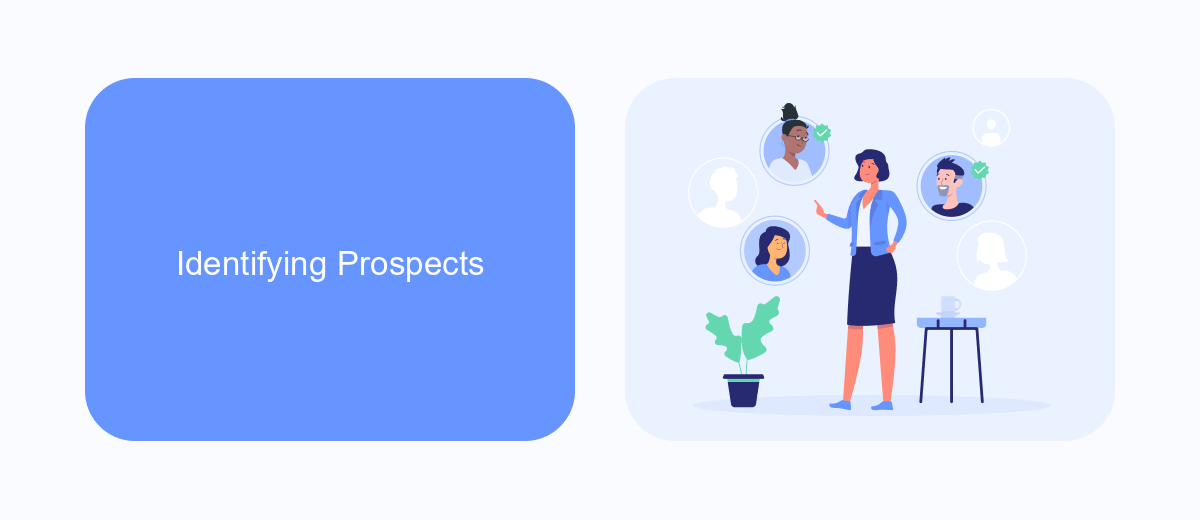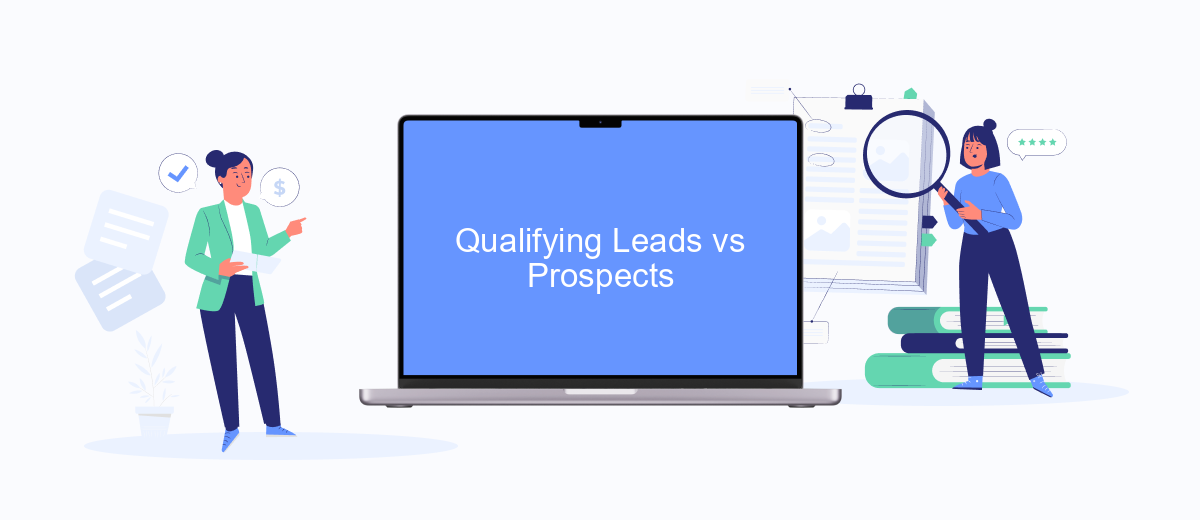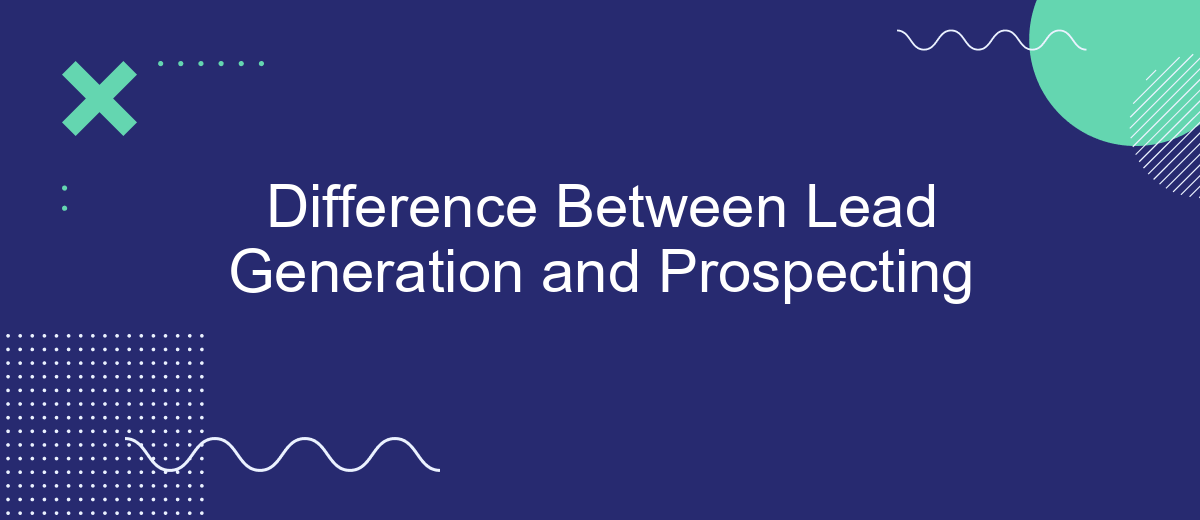In the world of sales and marketing, understanding the distinction between lead generation and prospecting is crucial for success. While both processes aim to identify potential customers, they employ different strategies and serve unique purposes. This article delves into the key differences between lead generation and prospecting, helping you optimize your approach and enhance your business growth.
Understanding Lead Generation
Lead generation is a crucial aspect of any business's marketing strategy. It involves attracting and converting strangers into someone who has indicated interest in your company's product or service. The goal is to create a consistent flow of potential customers who can be nurtured through the sales funnel until they are ready to make a purchase.
- Identify target audience: Understand who your ideal customers are.
- Create valuable content: Develop content that addresses the needs and pain points of your audience.
- Utilize multiple channels: Use social media, email marketing, and SEO to reach your audience.
- Implement lead capture forms: Collect contact information through forms on your website.
- Analyze and optimize: Continuously monitor and improve your lead generation strategies.
Effective lead generation often requires the use of various tools and services to streamline the process. For instance, SaveMyLeads can automate the integration of your lead generation platforms with CRM systems, ensuring that no potential lead is lost and that your sales team can follow up promptly. By leveraging such tools, businesses can enhance their lead generation efforts and increase their chances of converting leads into customers.
Identifying Prospects

Identifying prospects is a crucial step in the sales process, as it involves pinpointing potential customers who are likely to benefit from your product or service. The first step in identifying prospects is to define your ideal customer profile (ICP). This involves analyzing your existing customer base and identifying common characteristics such as industry, company size, job titles, and pain points. Utilizing tools like CRM systems and data analytics can help in segmenting and targeting potential leads more effectively.
Once you have a clear understanding of your ICP, the next step is to use various methods to gather information about potential prospects. This can include online research, social media monitoring, and leveraging professional networks like LinkedIn. Additionally, integrating automation tools like SaveMyLeads can streamline the process by automatically capturing and organizing leads from various sources into your CRM. This not only saves time but also ensures that no potential prospect is overlooked, allowing your sales team to focus on converting these leads into customers.
Qualifying Leads vs Prospects

Qualifying leads and prospects is a crucial step in the sales process, ensuring that time and resources are invested in the most promising opportunities. While both leads and prospects are potential customers, they are at different stages of the sales funnel and require distinct approaches for qualification.
- Lead Qualification: Leads are typically in the early stages of the sales process. They have shown some level of interest but need to be evaluated based on criteria such as fit, interest, and readiness to buy. Tools like SaveMyLeads can automate the integration of lead data from various sources, ensuring a seamless flow of information for effective qualification.
- Prospect Qualification: Prospects, on the other hand, are leads that have been further vetted and show a higher potential for conversion. They require more personalized and targeted communication. At this stage, it’s crucial to assess their specific needs, budget, and decision-making process to tailor your approach accordingly.
By effectively qualifying leads and prospects, businesses can focus their efforts on the most promising opportunities, improving conversion rates and maximizing sales efficiency. Utilizing tools like SaveMyLeads can streamline this process, ensuring that no valuable lead data is lost and enhancing the overall effectiveness of your sales strategy.
Key Differences at a Glance

Lead generation and prospecting are crucial components of the sales process, but they serve different purposes and involve distinct activities. Understanding these differences can help businesses streamline their strategies and improve overall efficiency.
Lead generation focuses on attracting and capturing potential customers' interest through various marketing efforts. This process typically involves creating content, running ads, and utilizing tools like SaveMyLeads to automate data collection and integration. On the other hand, prospecting is a more direct approach, where sales teams actively search for and reach out to potential clients.
- Objective: Lead generation aims to attract a broad audience, while prospecting targets specific individuals.
- Method: Lead generation uses marketing tactics and automation tools, whereas prospecting relies on direct communication and research.
- Tools: SaveMyLeads and similar services are used in lead generation, while CRM systems and social networks are common in prospecting.
By recognizing these key differences, businesses can better allocate resources and tailor their approaches to maximize the effectiveness of both lead generation and prospecting efforts.
Choosing the Right Approach
Choosing the right approach between lead generation and prospecting depends on your business goals, resources, and target audience. Lead generation is often more suitable for companies looking to attract a large volume of potential customers through marketing campaigns, social media, and content marketing. This method allows businesses to gather information about potential leads and nurture them over time. On the other hand, prospecting is more targeted and involves direct outreach to potential customers who fit your ideal customer profile, making it ideal for businesses with a clear understanding of their target market.
Integrating tools and services can streamline both lead generation and prospecting efforts. For instance, SaveMyLeads can automate the process of collecting and managing leads, ensuring that no potential customer is overlooked. By connecting various platforms and automating data transfer, SaveMyLeads helps businesses focus on engaging with leads rather than getting bogged down by administrative tasks. Ultimately, the choice between lead generation and prospecting should align with your overall strategy, resource availability, and the specific needs of your business.
FAQ
What is the primary difference between lead generation and prospecting?
Can lead generation and prospecting be automated?
Which is more important for a sales team: lead generation or prospecting?
How can I improve my lead generation efforts?
What are some common challenges in prospecting?
Would you like your employees to receive real-time data on new Facebook leads, and automatically send a welcome email or SMS to users who have responded to your social media ad? All this and more can be implemented using the SaveMyLeads system. Connect the necessary services to your Facebook advertising account and automate data transfer and routine work. Let your employees focus on what really matters, rather than wasting time manually transferring data or sending out template emails.
